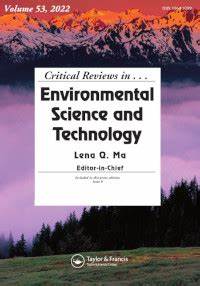Radiological dose from seafood ingestion; a global summary from 40 years of study
IF 11.4
1区 环境科学与生态学
Q1 ENVIRONMENTAL SCIENCES
Critical Reviews in Environmental Science and Technology
Pub Date : 2025-03-19
DOI:10.1080/10643389.2024.2413202
引用次数: 0
Abstract
Seafood is an important source for meeting future global nutrient demands. However, it also contributes disproportionately to the radiological ingestion dose of more than five billion world consumers– up to ∼70%–80% of the total-foods dose in some countries. Although numerous studies report seafood doses in specific populations, there is still no comprehensive evaluation answering basic questions such as “what is the ingestion dose to the average global seafood consumer?” Analysis of 238 worldwide seafood dose estimates suggests that typical adult consumers receive from 0.13 to 0.21 mSv, with a likely best estimate of 0.15 mSv per annual seafood intake. Those consuming large amounts of seafood, particularly bivalves, may experience ingestion doses exceeding 1 mSv per annual intake, surpassing other routine background dose sources. The published studies suggest that doses of 3 mSv or greater are surpassed in about 150 million adult seafood consumers worldwide. Almost all this dose comes from the natural radionuclides that are prevalent in marine systems–especially 210Po. While trace levels of anthropogenic radionuclides are ubiquitous in seafoods (e.g.,137Cs and 239Pu), the added dose from these is typically orders of magnitude lower. Even following the large-scale releases from the Fukushima accident, with food safety controls in place, the additional dose to consumers in Japan was small relative to routine dose from natural background radionuclides. However, the worldwide seafood dose estimates span seven orders of magnitude, indicating a need for an assessment that integrates global seafood radionuclide data as well as incorporating changes in seafood consumption and production patterns.海鲜摄入的放射剂量;这是40年研究的全球总结
海产品是满足未来全球营养需求的重要来源。然而,它也不成比例地增加了世界50多亿消费者的辐射摄入剂量,在一些国家高达食物总剂量的70%-80%。尽管许多研究报告了特定人群的海产品剂量,但仍然没有全面的评估来回答诸如“全球海产品消费者的平均摄入剂量是多少”等基本问题。对全球238项海产品剂量估计的分析表明,典型成年消费者接受的剂量为0.13至0.21毫西弗,每年海产品摄入量的最佳估计可能为0.15毫西弗。食用大量海产品,特别是双壳类海鲜的人,每年摄入的剂量可能超过1毫西弗,超过其他常规本底剂量源。已发表的研究表明,全世界约有1.5亿成年海产品消费者的剂量超过了3毫西弗或更高。几乎所有这些剂量都来自海洋系统中普遍存在的天然放射性核素,尤其是210Po。虽然微量的人为放射性核素在海产品中普遍存在(例如,137Cs和239Pu),但这些增加的剂量通常要低几个数量级。即使在福岛核事故发生大规模泄漏后,在食品安全控制措施到位的情况下,日本消费者受到的额外剂量相对于天然本底放射性核素的常规剂量也很小。然而,全球海产品剂量估计跨越7个数量级,表明需要进行综合全球海产品放射性核素数据的评估,并纳入海产品消费和生产模式的变化。
本文章由计算机程序翻译,如有差异,请以英文原文为准。
求助全文
约1分钟内获得全文
求助全文
来源期刊
CiteScore
27.30
自引率
1.60%
发文量
64
审稿时长
2 months
期刊介绍:
Two of the most pressing global challenges of our era involve understanding and addressing the multitude of environmental problems we face. In order to tackle them effectively, it is essential to devise logical strategies and methods for their control. Critical Reviews in Environmental Science and Technology serves as a valuable international platform for the comprehensive assessment of current knowledge across a wide range of environmental science topics.
Environmental science is a field that encompasses the intricate and fluid interactions between various scientific disciplines. These include earth and agricultural sciences, chemistry, biology, medicine, and engineering. Furthermore, new disciplines such as environmental toxicology and risk assessment have emerged in response to the increasing complexity of environmental challenges.
The purpose of Critical Reviews in Environmental Science and Technology is to provide a space for critical analysis and evaluation of existing knowledge in environmental science. By doing so, it encourages the advancement of our understanding and the development of effective solutions. This journal plays a crucial role in fostering international cooperation and collaboration in addressing the pressing environmental issues of our time.

 求助内容:
求助内容: 应助结果提醒方式:
应助结果提醒方式:


